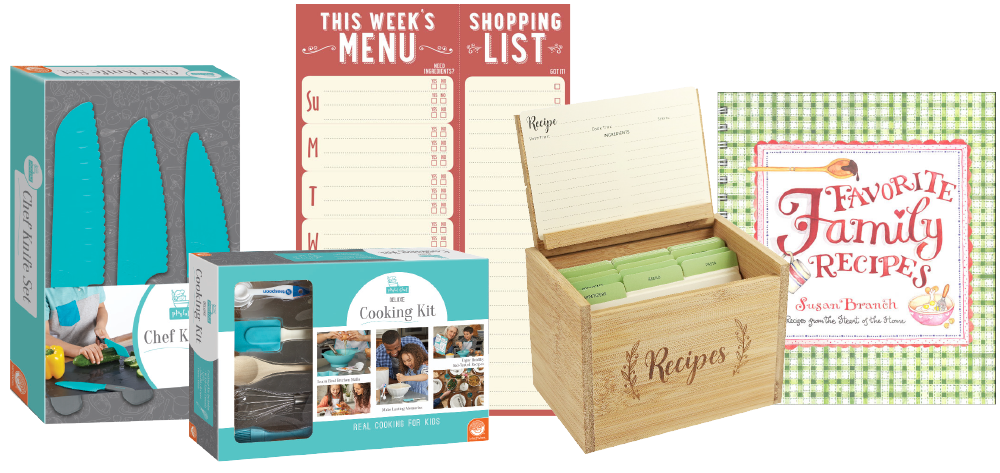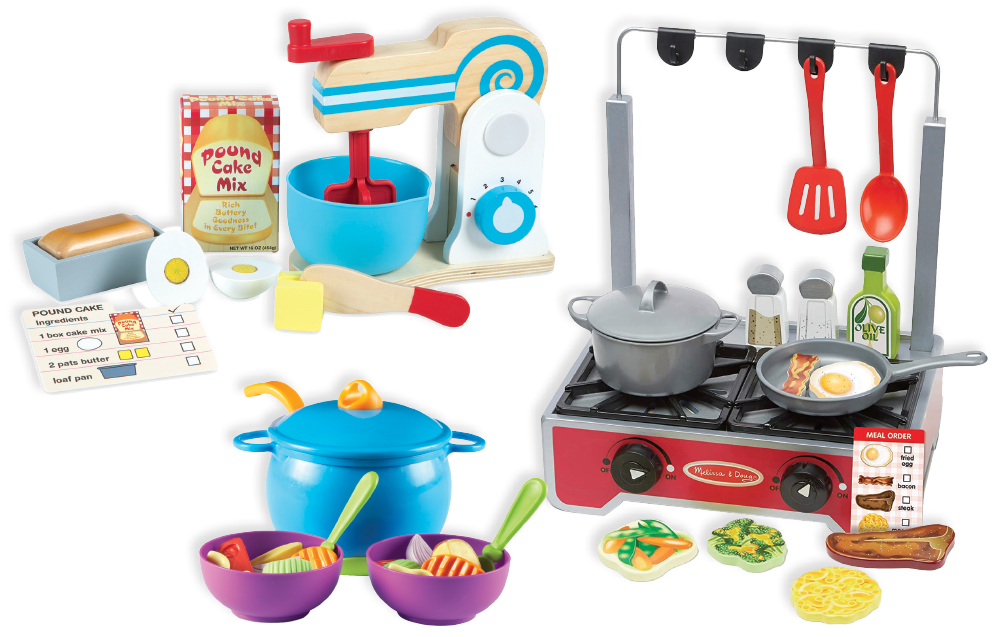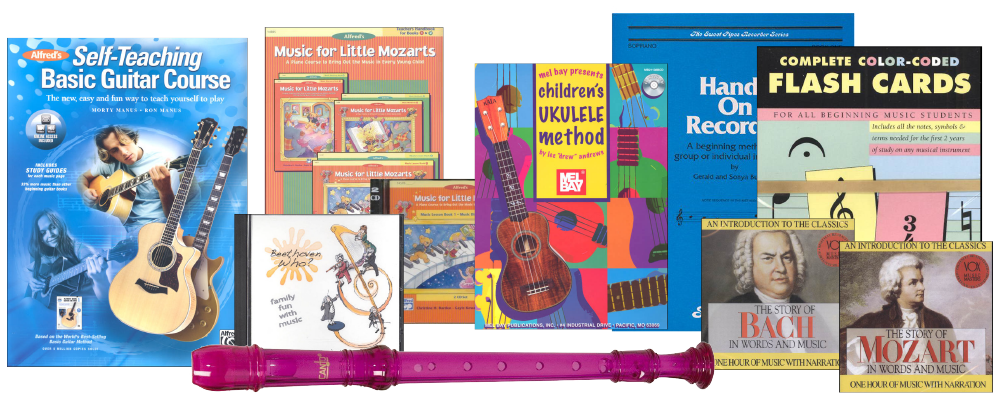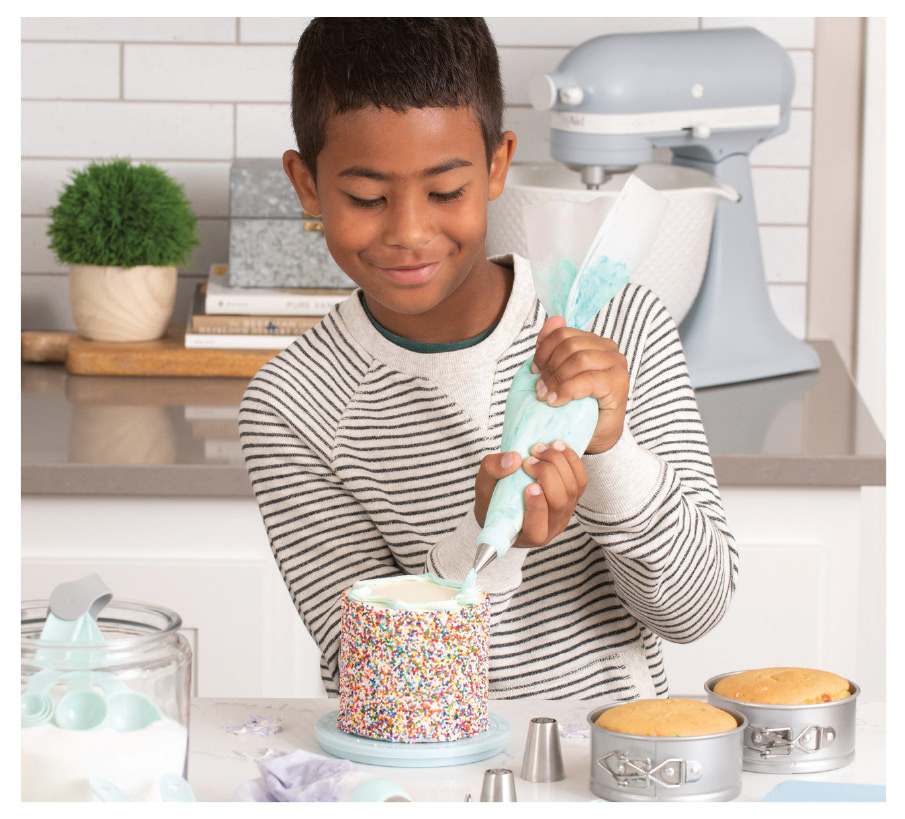
We spend our days doing product comparisons, recording instructional videos, and talking with homeschool parents. You will frequently find us online and at homeschool conventions, presenting encouraging and informational workshops, and answering curriculum questions. We thought it would be a fun introduction to each share a personal passion that has built confidence in us and our children!

We spend our days doing product comparisons, recording instructional videos, and talking with homeschool parents. You will frequently find us online and at homeschool conventions, presenting encouraging and informational workshops, and answering curriculum questions. We thought it would be a fun introduction to each share a personal passion that has built confidence in us and our children!

truggling to learn, my (Deanne’s) son found cooking to be an excellent way to build confidence. Today, as an adult, he is an accomplished chef who loves to create new recipes. I confess, when my son first showed an interest in trying new things in the kitchen, I did the mom sigh and tried to think of all the reasons not to do it. Let’s be honest, cooking with our children can seem like a chore with the extra time it takes, not to mention the mess. But let’s take a look at the benefits to our children and ourselves!
Did you realize that cooking is a form of nurturing? Offering a meal provides both emotional and physical support to the consumer. You are caring for someone else, meeting their needs in a very tangible way (remember that, tired mama, the next time all the littles are complaining they are hungry!). For the chef, providing the meal gives a sense of purpose and belonging. It is important to adults, but vital for our children. While this is a great benefit, our issue this season is about how to develop boldness.
Cooking together provides an excellent way to develop boldness in both ourselves and our children. Creativity, responsibility, and exposure to different food experiences accompany experimenting in the kitchen, laying a foundation for boldness.

Having the right kitchen tools is key. You will want quality knives, measuring cups, mixing bowls, and non-stick pans if possible. Safety is key, so if you are working with elementary-aged children, be sure to offer size-appropriate and safety-tested kitchen tools.
Looking for all-around good quality tools to get started? Playful Chef, from MW Wholesale, offers three kits to meet your cooking or baking needs. With an apron, wooden spoon, silicone basting brush, stainless steel whisk, handled bowl with spout, measuring cups and spoons, silicone spatula, star-shaped pan, plastic bench scraper, and recipes, the Playful Chef Deluxe Cooking Kit has everything you need to set up a child-friendly kitchen environment! If you already have quality, child-size basics, the Playful Chef Deluxe Baking Kit or Deluxe Cake Decorating Kit helps bring a new level of boldness to your cooking adventures! The Deluxe Baking Kit offers a perfectly sized wooden spoon, silicone basting brush, stainless steel whisk, measuring cups and spoons, Bundt pan, rolling pin, two cookie cutters, and recipes.

All budding chefs also need a high-quality knife set, but finding ones that fit little hands can be a challenge. Thankfully, MW Wholesale comes through again with their Playful Chef Kitchen Knife set, which offers three differently sized knives and an illustrated teaching booklet on grip and cutting techniques. I don’t know about you, but slicing and dicing has become so routine, that going back and reviewing grip and cutting skills improved my personal safety as well!
When working with older children, allow them time to meal plan and add in new recipe creations. Whether tweaking an old favorite or brainstorming foods that go well together, freedom to try—and sometimes fail—can be a confidence builder. It may also unleash a passion for cooking or hidden talents! Like our elementary kiddos, having the right tools is imperative. Start small. Take one day or even one meal and make a plan for the family. Introduce the food groups and the importance of providing balanced meals. Teach them about budgeting! Encourage them to find or create recipes that they want to try. Take time to write out a shopping list. Use a tool like This Week’s Menu Notepad from Peter Pauper Press to organize your meals and shopping. Once the list is made, accompany them to the store, but let them be the decision makers. Following the list and your preset budget, teach them how to price compare ingredients. Talk about generic vs. name brands or purchasing staples in larger quantities to save money in the long run. For most of us, this is second nature, but they are life skills our children will take with them!
You may be more hands off during this shopping trip if your children are older and able to navigate the grocery store. Once home, help them determine the time necessary to have a meal ready at the set time. When it comes to cooking, allow your children to function as independently as possible. Yes, it is often easier and less messy to come alongside and inadvertently take over the process, but our goal is building confidence and boldness through the cooking process.
One thing my son and I loved to do with his cooking experiments was to document the process. If using a recipe, he would copy and note his changes in the margin. Once the meal was eaten, we would note what did and didn’t work. If the recipe was a “do again,” we would add it to our family favorites. There are numerous ways to create a family favorites recipe collection. Some families prefer to keep their treasured favorites on individual recipe cards in a quality recipe box. If this is your family’s preference, check out this sturdy, sustainably sourced bamboo Recipe Box Set from Peter Pauper Press. The set includes fifty recipe cards, twenty-two divider tabs, and two cards with useful cooking conversions and substitutions. One thing I love about this recipe box is the slot in the top that holds cards for quick reference while cooking!
If you are more of a recipe book family, the Publications International, Ltd., New Season’s Favorite Family Recipes Blank Recipe Book is the perfect starter for recording your child’s creations. Seasoned recipe collectors will appreciate Peter Pauper Press’ Our Family Recipes Journal, which provides a wonderful way to share recipes and stories with family members. Each recipe has two pages with a place to write the title, number of servings, prep time, the source of the recipe, the ingredients, and instructions, and it wraps up with space to share why this recipe is special. What an awesome treasure to share with your children as they leave home! One of the greatest projects we did as a family was reaching out to grandparents, aunts, and uncles to request their favorite recipes. We encouraged family members to share why their recipe was special. Once we had the recipes, my children followed the instructions to make the recipe and photographed it. Taking the recipes and photos, my children created a family favorites cookbook that was gifted to each member of the family at Christmas time! This project instilled a sense of belonging and confidence in my children, but more importantly, they were able to bless other family members by sharing this monumental work. It was a win-win for all!
You may be thinking, well this is all fine and great for big kids, but I have toddlers. How do I inspire cooking in the littlest ones? While toddlers can be involved in no-cook recipes, it’s true many kitchen activities will be unsafe for them. However, they are never too young to feel like they are a part of the festivities! Young children love to mimic adult activities. If you have the space, set up a toddler kitchen in a corner of your dining room with their own play kitchen. No space? Check out Melissa and Doug’s Deluxe Wooden Cooktop Set, which fits neatly in a smaller area or on the kitchen table. They can even bake and slice cookies or mix up a cake with Melissa and Doug’s Slice and Bake Set or wooden Make A Cake Mixer Set! You can even encourage healthier eating with Learning Resource’s New Sprouts Soups On! Play Food set complete with tureen, ladle, and bowls!
All of us, regardless of our age, can grow in confidence and boldness through creative cooking. Take this journey with your children, and fall in love with cooking again!

iving children the opportunity to explore and grow in areas that truly spark their curiosity creates freedom in your homeschool—while allowing you to homeschool with confidence! I (Gina) played the flute in school and thoroughly enjoyed learning how to read music. I didn’t even mind all the practicing involved. As I began homeschooling, I realized how learning a musical instrument really has many benefits. It teaches responsibility and patience, boosts confidence, reduces stress, improves math and reading skills, and exposes children to different cultures and historical periods. I encouraged my children to start with piano lessons at a young age.
All my children love music, but I had no idea my oldest was going to discover such a deep love for it that remains with him today. From learning improvisation with piano lessons to guitar, drums, and even the banjo—music has created an avenue of creativity, servanthood, and enjoyment in his life.

iving children the opportunity to explore and grow in areas that truly spark their curiosity creates freedom in your homeschool—while allowing you to homeschool with confidence! I (Gina) played the flute in school and thoroughly enjoyed learning how to read music. I didn’t even mind all the practicing involved. As I began homeschooling, I realized how learning a musical instrument really has many benefits. It teaches responsibility and patience, boosts confidence, reduces stress, improves math and reading skills, and exposes children to different cultures and historical periods. I encouraged my children to start with piano lessons at a young age.
All my children love music, but I had no idea my oldest was going to discover such a deep love for it that remains with him today. From learning improvisation with piano lessons to guitar, drums, and even the banjo—music has created an avenue of creativity, servanthood, and enjoyment in his life.
Alfred’s Music for Little Mozarts books help kids learn beginning piano skills and basic music instruction with ease. Designed for four, five, and six year olds, these books sport two fun-loving characters, Beethoven Bear and Mozart Mouse, to make learning fun and exciting as children take on this new skill. There are four books, or levels, in this series, and each level has a lesson book, CD, workbook, discovery book, recital book, and flashcards. Teacher handbooks are available with lesson plans and teaching tips. Book One of the series teaches keyboard posture, correct hand positions, high and low, loud and soft, music notes, and more. Kids begin to play simple songs on the groups of black keys, then find the notes and begin playing songs with the white keys. As the books progress, children learn more challenging notes and concepts.
Alfred’s music courses for older children also have very clear instructions with wonderful illustrations, but they move along at a slightly faster pace. By the end, students are playing much more advanced pieces. The core books for piano are the lesson books, theory, recital, technique, and ear training books. Alfred’s Self-Teaching Basic Guitar Method Book 1 for older children is also an excellent course to teach your child guitar, or they can be self-directed. Starting with the foundational knowledge of notes, then transitioning into chords, there is an emphasis on both as the lessons progress. Also included are extra study guide pages and a free download of online audio recordings and video lessons.
If you have a new music student in your home, these Color-Coded Flashcards by Alfred can help teach symbols, notes, and other musical terms. There are eighty-nine flash cards in the set that can be used by any music student for any instrument.
Teaching your children how to play the recorder is an easy and inexpensive way to introduce them to music. They can learn how to read music while actually building their confidence as they learn how to play an instrument. Canto Recorder and Recorder Books by Rhythm Band Instruments offer easy-to-follow instructions with clear illustrations. The set comes with an instructional song book and a recorder. Forty-six songs are included and arranged by level of difficulty. This is a nice option because it is a simple instrument you can all learn together as a family.

If learning a music instrument is not an option for your children at this time, you can still expose your children to classical composers. Getting to Know the World’s Greatest Composers series by Scholastic gives a wonderful overview of the lives of great composers and their music. These straightforward books introduce young children to classical music in a fun way by using colorful cartoons, real pictures, and an interesting storyline of each composer. My children even picked up these books to read in their free time or took them along on long car trips.
Music Masters CDs by Naxos of America are another wonderful way to study the great composers. The CDs interweave a narrative about the composer’s life along with selections of their music. Each CD is approximately an hour in length. Again, another great idea for long car rides.
Beethoven Who? Family Fun with Music by Next Generation Publishing is another option to expose your children to music and makes it possible to do as a family. This curriculum can be used even if parents aren’t familiar with any type of music. Beethoven Who? is an ebook with pdf files on CD-ROM. Your children will be able to enjoy music while learning music appreciation and how to read music. There are online resources available, as well as hands-on activities, games, and other reproducible sheets.
To be honest, teaching a musical instrument to my children was very intimidating, and I chose to outsource their lessons when learning a new instrument. However, there are so many options today that make it easy to introduce your children to music before they take formal lessons. There are also many ways to expose your children to different genres of music while developing a love and appreciation for music for years to come.
Inspire your children to pursue interests with passion! We love how Thomas Carlyle expresses it, “Nothing builds self-esteem and self-confidence like accomplishment.”

